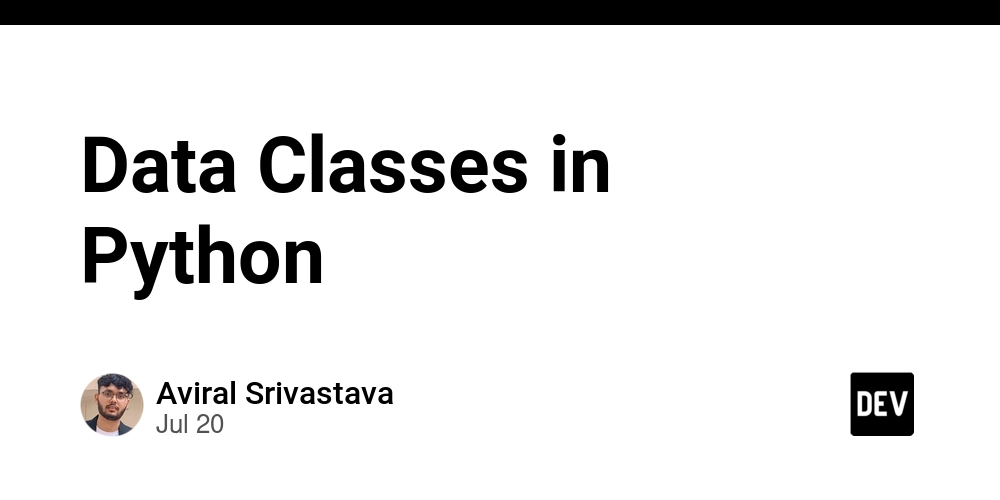Data Classes in Python – DEV Community
Data Classes in Python: A Concise Overview
Introduction:
Python’s data classes, introduced in Python 3.7, provide a concise way to define classes primarily intended for storing data. They automate the generation of boilerplate code, making data structures cleaner and more efficient.
Prerequisites:
Before utilizing data classes, ensure you have Python 3.7 or a later version installed. Basic understanding of Python classes and object-oriented programming is helpful but not strictly necessary.
Features:
Data classes leverage the @dataclass decorator. This decorator automatically generates methods such as __init__, __repr__, and __eq__. You specify the attributes within the class definition. For example:
from dataclasses import dataclass
@dataclass
class Point:
x: int
y: int
This automatically creates an initializer, a __repr__ method for readable string representation, and an equality comparison method. You can customize this behavior using init=False, repr=False, eq=False, etc. You can also add default values, type hints, and custom methods.
Advantages:
- Reduced boilerplate: Significantly less code is required compared to manually writing getters, setters, and comparison methods.
- Readability: Data classes improve code clarity, making it easier to understand the data structure.
- Maintainability: Modifications are simpler as less code needs to be updated.
- Type hinting support: Enhances code reliability through static type checking.
Disadvantages:
- Limited functionality: Data classes are best suited for simple data structures. For complex logic, traditional classes are more appropriate.
-
Immutability limitations: By default, data classes are mutable. While
frozen=Trueoffers immutability, this might restrict certain use cases.
Conclusion:
Python data classes are a powerful tool for simplifying the creation and management of data-centric classes. Their concise syntax and automatic generation of essential methods significantly improve code readability and maintainability. However, they are most effective for simpler data structures; complex scenarios might benefit from the flexibility of traditional classes.

